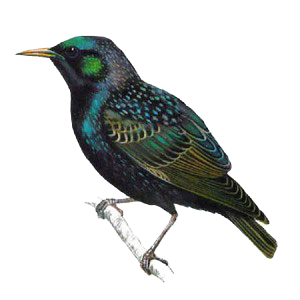Some species of bird are protected, use our online guide to see if we can help with your pest bird problems and management.
Problems caused by pest birds
Gutters and drains are popular areas for Pigeons, Starlings and Sparrows to create nests this can lead to accumulating bird droppings, bird carcasses and blocked drainage systems. Blocked drains are of particular concern as they cause water to backup which can lead to leaking ceilings and walls as well as ceiling and wall collapse.
The nooks and crannies around ventilation systems are another favourite nesting place of pigeons and starlings. Bird nests built in ventilation systems can both spread diseases through the system and block air-flow. Blocked ventilation systems lead to particular problems in temperature-sensitive businesses and businesses dealing with industrial chemicals.
Pest birds pose an additional serious problem to food-based businesses. The spread of diseases such as salmonella through faecal matter and other diseases spread by parasites can cause the food produced by the business to be contaminated. This can lead to serious illness among customers eating the business products, exposing the business to bad publicity and costly litigation.
The acidity of the bird droppings its high enough to cause considerable damage to air conditioning equipment, industrial machinery, insulation and the vehicles of customers, staff and the business.
As is the case with rats, pest birds play host to many diseases and parasites and mites– such as ticks – that, if left unchecked, can spread disease to customers and staff of industrial and commercial businesses. In addition to the diseases caused by parasites, diseases known to be associated with pest birds include: Paratyphoid; Vibriosis; Salmonella; Listeriosis; Pasteurellosis; Histoplasmosis; Candidiasis; Sarcosporidiosias; Blastomycosis; Encephalitis; Meningitis; Newcastle Disease; Toxoplasmosis; Trichomoniasis; and Rickets. These diseases can be caused by airborne transmission, the inhalation of faecal dust, direct contact with faeces or the exposure of open wounds to faeces or faecal dust and the presence of faecal matter in water supplies.
Pigeons, starlings, sparrows and Indian mynas often enter roofing cavities through exposed openings and set up nests. The weight of accumulated droppings, nests and carcasses and the acidity of the droppings can then lead to collapsed ceilings and in particular fire hazards.
Diseases associated with Pest Birds
 Disease Information Sheet
Disease Information Sheet


